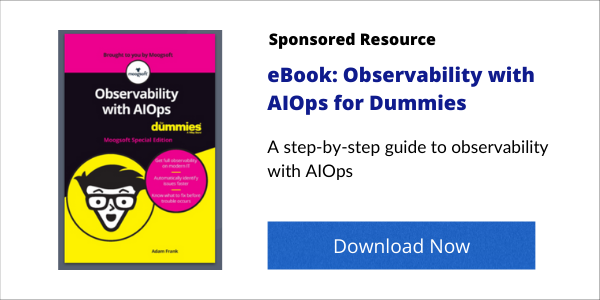
AIOps streamlines the monitoring of operational data from applications, cloud services, networks, and infrastructures. This is ideal for helping manage the user experience in homes.
Even before the discovery of the Omicron variant, many companies decided hybrid and flexible work would be the new way to do business. What they are finding is that this mix of in-office and at home, back and forth, introduces multiple performance and connectivity. As such, more IT departments are looking beyond traditional management tools for more powerful solutions based on AIOps to help.
Scope of the change
Enterprise Management Associates (EMA) surveyed 312 network infrastructure and operations professionals earlier this year about how they are adapting their networks to post-pandemic business requirements. The results, published in the report, “Post-Pandemic Networking: Enabling the Work-From-Anywhere Enterprise,” found that 85% of the participants reported that the pandemic had permanently expanded their work-from-home (WFH) user base. The average respondent said around 20% of employees worked from home regularly before the pandemic. They are projecting that 50% of employees will work from home post-pandemic.
What are the implications? The problem is that it is very difficult to diagnose home user problems, find the root cause of those problems, or spot potential problems in the making and prevent them with traditional IT tools due to the complexity of the situation.
For example, suppose an executive working from home has a poor-quality video session with an investor, major client, or partner. Is the source of the degraded performance the quality of the broadband service, the location of the exec’s laptop in the home with respect to the Wi-Fi router, his or her kids are consuming valuable bandwidth gaming and streaming, or is it simply that the laptop is struggling to run all the open browser sessions, apps, and the video session itself?
As such, attention is now being focused on the ability of home users to do their job. IT must ensure a satisfactory user experience, which is the equivalent of customer experience but for employees. Some regard the issue of user experience as being so important that they are considering deploying special hardware to the home to ensure the required performance and security. The last thing IT departments want is to have to manage hundreds (thousands) or more devices in remote locations they have no access to.
The mere fact that some companies are considering such an approach tells you how extreme the problem has become.

How AIOps can help
Until now, it is fair to say that IT organizations took a “good enough” approach to supporting remote employees. If network performance problems undermined employee productivity, the easiest solution was to require the employee to work from the nearest office, where IT had more control and more visibility into the network.
That is no longer an option. Enter AIOps, which streamlines the monitoring of operational data from applications, cloud services, networks, infrastructures, and allows for automation. This is ideal for helping manage the user experience in homes.
As Richard Whitehead, CTO and Evangelist in Chief at Moogsoft, wrote in a recent blog:
“An AIOps platform helps IT teams handle increased and increasingly dissimilar data caused by the globe’s permanent shift to remote and hybrid work models. AIOps deploys intelligent algorithms that ingest large volumes of data with varying properties and from disparate sources and automates its analysis. The AIOps solution looks at the aggregated data to detect patterns and predict problems before they raise their ugly heads and cause disruption to employee productivity. And, if there is a service-impacting incident, AIOps helps DevOps and SRE teams quickly identify the root cause and determine a fix to reduce mean time to remediation (MTTR).”






